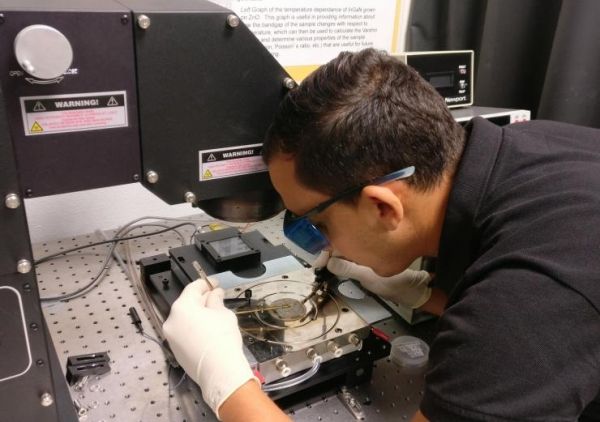A team of semiconductor researchers based in France has used a boron nitride separation layer to grow indium gallium nitride (InGaN) solar cells that were then lifted off their original sapphire substrate and placed onto a glass substrate.
By combining the InGaN cells with photovoltaic (PV) cells made from materials such as silicon or gallium arsenide, the new lift-off technique could facilitate fabrication of higher efficiency hybrid PV devices able to capture a broader spectrum of light. Such hybrid structures could theoretically boost solar cell efficiency as high as 30 percent for an InGaN/Si tandem device.
The technique is the third major application for the hexagonal boron nitride lift-off technique, which was developed by a team of researchers from the Georgia Institute of Technology, the French National Center for Scientific Research (CNRS), and Institut Lafayette in Metz, France. Earlier applications targeted sensors and light-emitting diodes (LEDs).
“By putting these structures together with photovoltaic cells made of silicon or a III-V material, we can cover the visible spectrum with the silicon and utilize the blue and UV light with indium gallium nitride to gather light more efficiently,” said Abdallah Ougazzaden, director of Georgia Tech Lorraine in Metz, France and a professor in Georgia Tech’s School of Electrical and Computer Engineering (ECE). “The boron nitride layer doesn’t impact the quality of the indium gallium nitride grown on it, and we were able to lift off the InGaN solar cells without cracking them.”
Continue reading at Georgia Tech.
Image via Georgia Tech.


